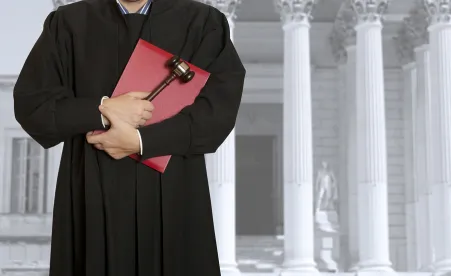A town cannot compel a utility company to post a warning notice that its utility poles contain a wood preservative. That is the effect of U.S. District Judge Spatt’s February 4th decision in PSEG Long Island LLC v. Town of North Hempstead, 15-cv-0222, slip op. (E.D.N.Y Feb. 4, 2016).
On September 9, 2014, the Town of North Hempstead (“Town”) enacted an ordinance that required PSEG Long Island (“PSEG-LI”) to post a “warning” sign on every fourth utility pole, indicating that: the utility pole contained a hazardous chemical; prolonged exposure should be avoided; and exposed areas should be washed. PSEG-LI challenged the ordinance on multiple grounds including that it violated the First Amendment.
The majority of utility poles in the United States, including those PSEG-LI recently installed in the Town, are treated before use with Pentachlorophenol (“Penta”) – a heavy-duty, EPA-registered wood preservative regulated under the Federal Insecticide, Fungicide, and Rodenticide Act (FIFRA). The Town sought to justify the ordinance requiring warning signs on the ground that the utility poles allegedly posed a significant risk to residents who touch them, and to the environment itself, ostensibly through migration of Penta into groundwater (although none has been documented in amounts exceeding any applicable maximum contaminant or action level). During the public debate that followed, and in its Complaint to the District Court, PSEG-LI pointed out that Penta is registered for exactly – indeed, solely – this use, based on a comprehensive EPA health and environmental risk assessment.
On February 4, the District Court declared the ordinance an unconstitutional attempt to compel noncommercial speech. In so doing, the Court hewed closely to the standard First Amendment analysis with respect to government-compelled speech.
The Court first examined whether the Town ordinance constituted the regulation of commercial or noncommercial speech. As the Court noted, “well-settled Supreme Court precedents dictate the application of strict scrutiny to state or local statutes that require individuals to carry a particular government-sponsored message.” Slip Op. at 23-24 (citing Turner Broadcasting System v. FCC, 512 U.S. 622, 641-42 (1994)). On the other hand, commercial speech is subject to either intermediate scrutiny or rational basis review. Slip Op. at 24 (citing Bolger v. Youngs Drug Prods. Corp., 463 U.S. 60, 64 (1983)).
After a painstaking review of recent case law precedent, including New York Restaurant Ass’n v. N.Y.C. Bd. of Health, 556 F.3d 114 (2d Cir. 2009), Nat’l Elec. Mfrs. Ass’n v. Sorrell, 272 F.3d 104 (2d Cir. 2001), Judge Spatt drew a critical distinction, “in order to qualify as commercial speech, the message sought to be regulated must necessarily bear some discernible connection to the commercial interests of the speaker.” Slip Op. at 28. Applying this standard, the court found:
[T]he warning signs required by [the ordinance] constitute a form of expression that cannot be considered commercial speech. Simply stated, the warning signs bear no discernible relationship to the Plaintiffs’ products, services, or other commercial interests, and are therefore outside the purview of the commercial speech doctrine.
Slip Op. at 29. The court noted that the Town ordinance did not seek to influence consumer behavior, the utility poles are not sold to the public and residents cannot purchase electricity from another company. Id. at 31.
The Court thus applied strict scrutiny, whereby the Town ordinance must be “justified by a compelling government interest and must be narrowly drawn to serve that interest.” Slip Op. at 35. Stating the standard another way, the Court explained that the Town is required to “specifically identify an ‘actual problem’ in need of solving, and the evidence must establish that curtailment of free speech [namely, in the form of a compelled noncommercial message] is actually necessary to the solution.” Id. (citing to Brown v. Entm’t Merchs. Ass’n, 131 S. Ct. 2729, 2739 (2011)). The Court ruled that the Town ordinance “does not survive this test.” Id.
The Court reasoned that, even if protecting against Penta exposure constitutes a compelling governmental interest, there are less restrictive means available to inform the public about the risk in a manner that would not infringe upon PSEG-LI’s First Amendment rights. Slip Op. at 35-37. The Court provided as examples that the Town could post its own signs or effectuate its own media campaign. Id. The Court found that the ordinance, at base, “compels [PSEG-LI] to voice the government’s viewpoint and to do so as if it were their own.” Id. at 33 (citing Alliance for Open Soc’y v. U.S. Agency for Int’l Dev., 651 F.3d 218, 237 (2d Cir. 2011)). Accordingly, the Court granted PSEG-LI’s motion for summary judgment and permanently enjoined enforcement of the Town ordinance.
The decision provides important guidance regarding the distinction between commercial and noncommercial speech. A utility service provider does not through the mere presence of utility infrastructure and collection of rate-based revenues propose a commercial transaction within the meaning of First Amendment jurisprudence. The decision also stands for the proposition that the government has many options available to get out its message regarding the purported risks from exposure to pesticide-treated utility poles, and compelled warning signs is not one of them.




 />i
/>i

